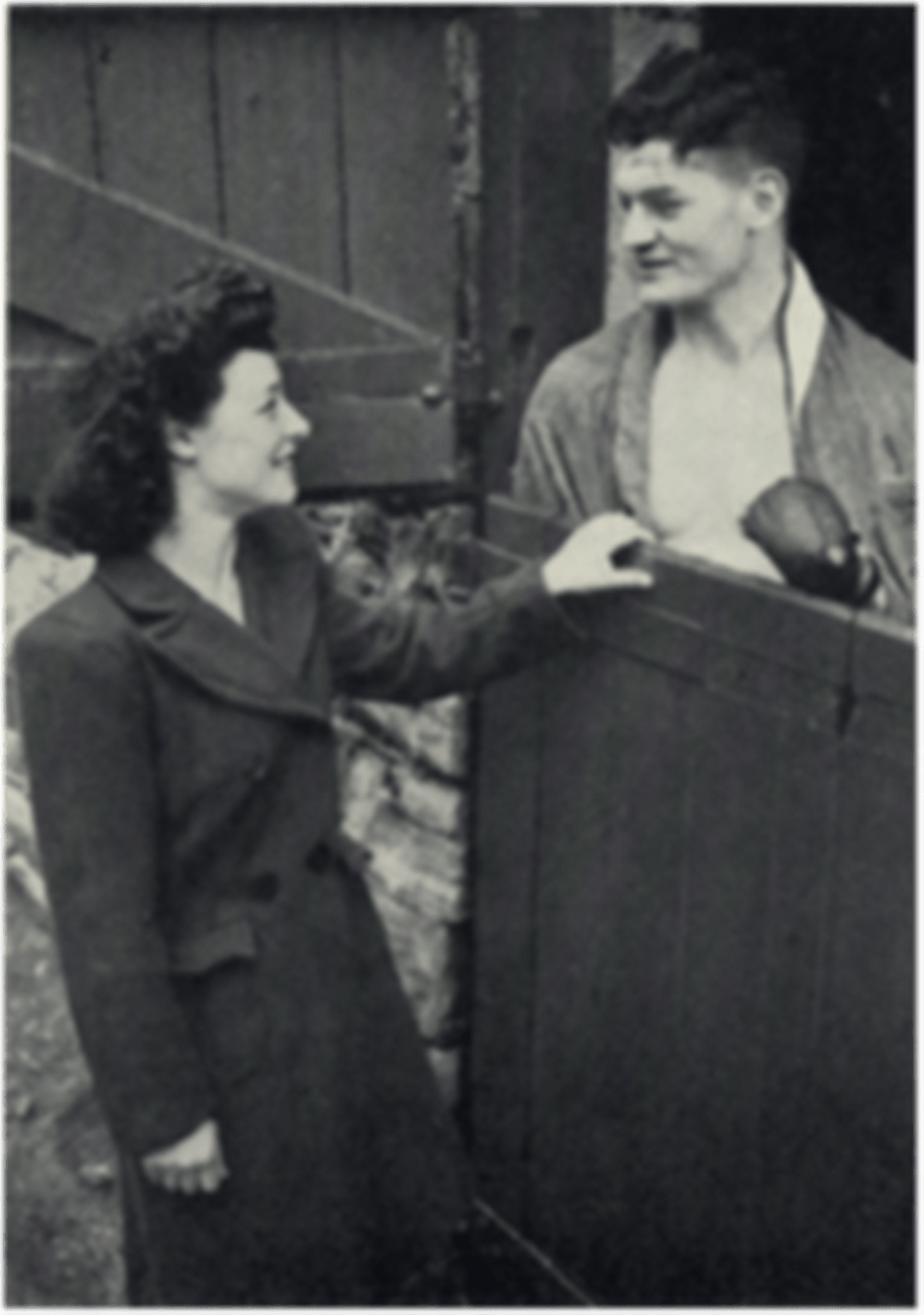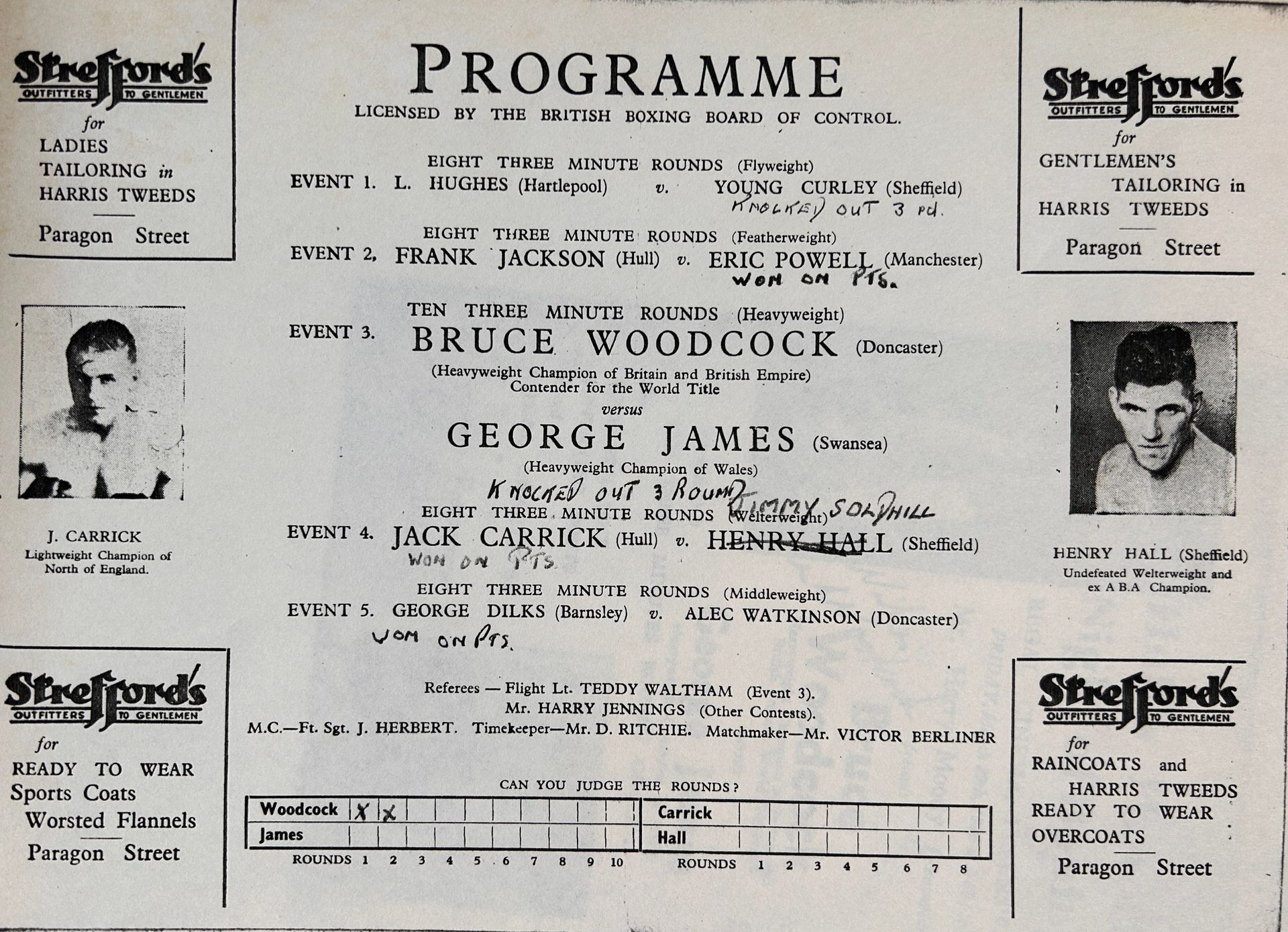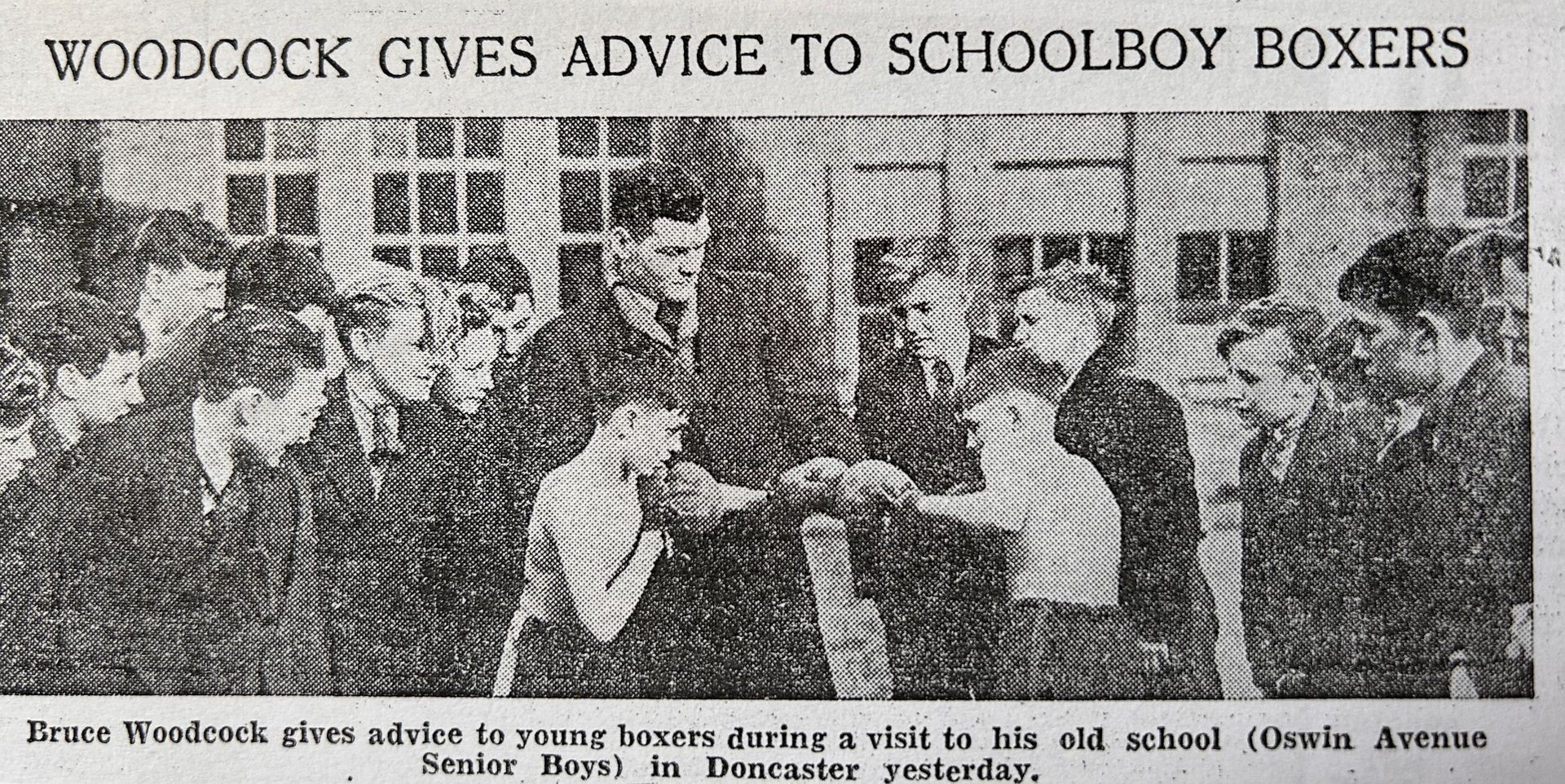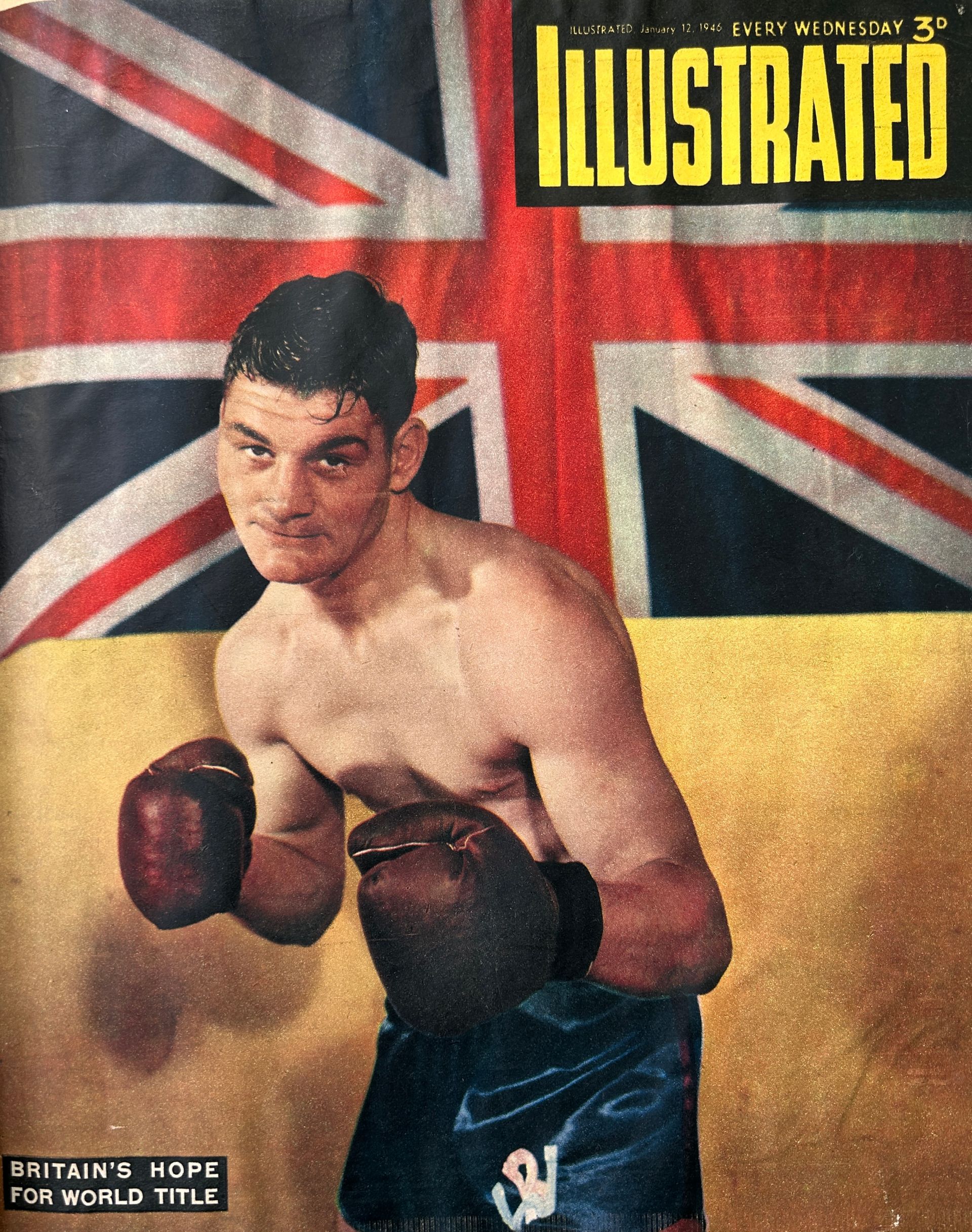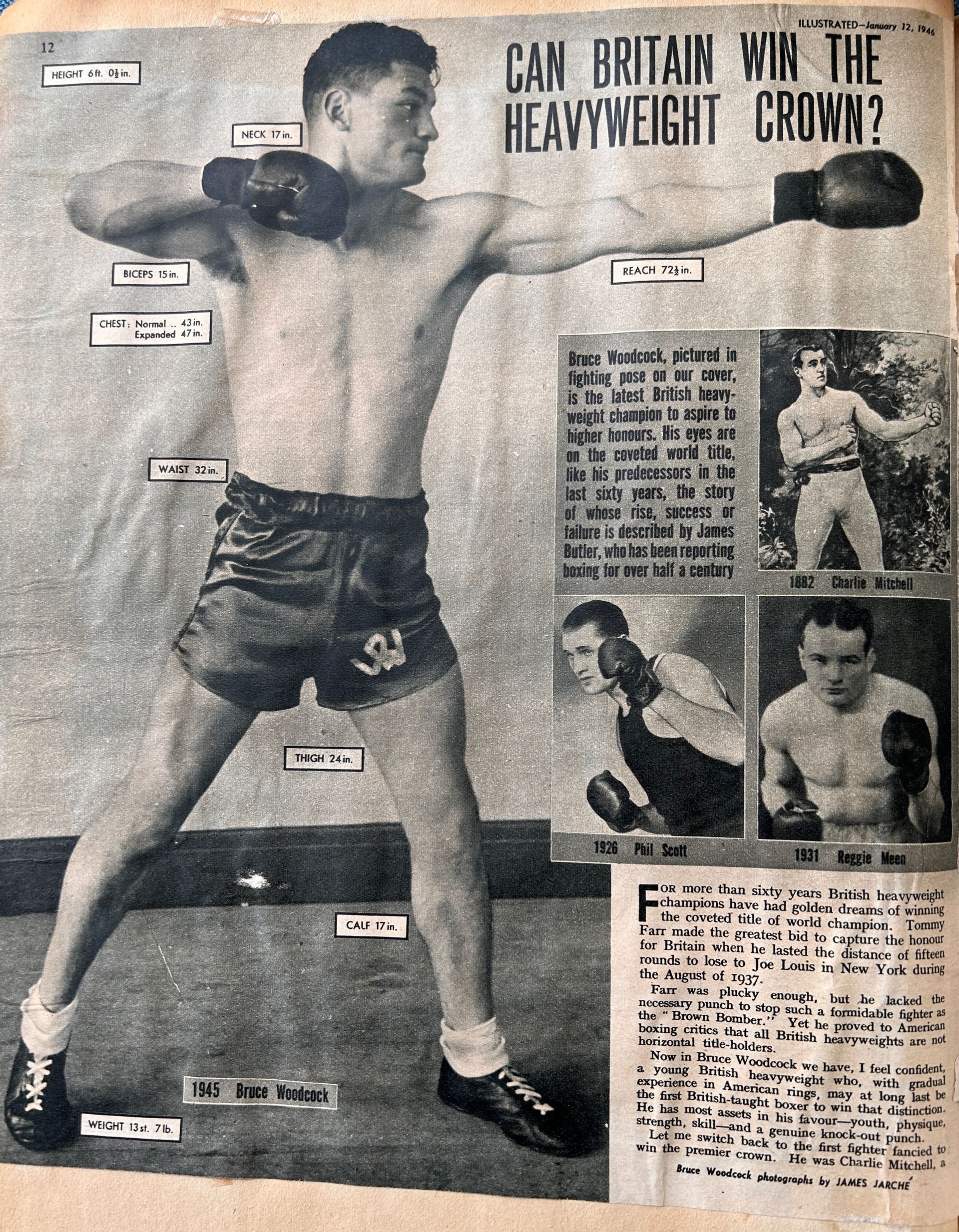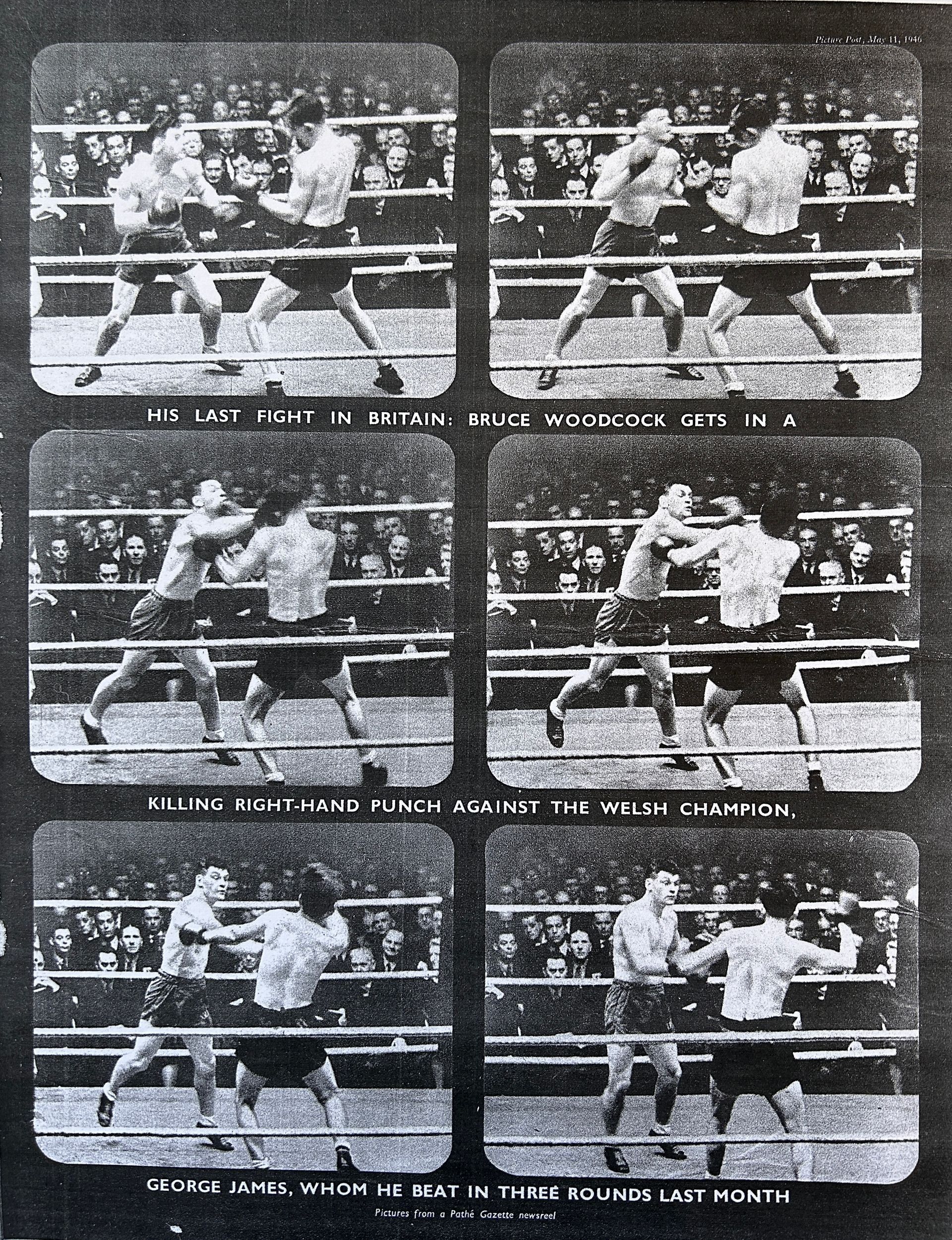CAN BRITAIN WIN THE HEAVYWEIGHT CROWN ?
For more than sixty years British heavyweight champions have had golden dreams of winning the coveted title of world champion. Tommy Farr made the greatest bid to capture the honour for Britain when he lasted the distance of fifteen rounds to lose to Joe Louis in New York during the August of 1937.
Farr was plucky enough, but he lacked the necessary punch to stop such a formidable fighter as the "Brown Bomber." Yet he proved to American boxing critics that all British heavyweights are not horizontal title-holders.
Now in Bruce Woodcock we have, I feel confident, a young British heavyweight who, with gradual experience in American rings, may at long last be the first British-taught boxer to win that distinction. He has most assets in his favour - youth, physique, strength, skill-and a genuine knock-out punch.
Let me switch back to the first fighter fancied to win the premier crown. He was Charlie Mitchell, a Birmingham man who started his career in the prize ring. Mitchell was a skilful boxer, and possessed a heart much bigger than himself. He made fistic history with his thirty-nine rounds battle with bare fists against John L. Sullivan at Chantilly, France.
Previously Mitchell had fought a wonderful battle against Jack Burke, the "Irish Lad," at the back of the grandstand at the Ascot race meeting in 1881. Mitchell, however, suffered a severe physical handicap. He only scaled 10 st. 10 lb. at his best, and stood no higher than 5 ft. 9 in.
Strictly speaking, the first oficial British heavy-weight championship to be recognized was Gunner James Moir defeated Jack Palmer, the "Pitman's Champion," at the old National Sporting Club.
I remember Moir with his tattooed body, an obstinate chin, and a fairly good punch, proving the Northerner's master. But he only held the title for a few months. A burly Yorkshireman, William "Iron" Hague, knocked Moir cold in the first round.
Hague had been champion for two years when there appeared upon the scene as challenger handsome, fair-haired Bombardier Billy Wells. Wells, the perfect master of scientific boxing, knocked out Hague in six rounds with a smashing right hook to the chin. It was one of the finest punches that i have seen during half a century of fight reporting.
Wells became a public idol. Although he lost two disastrous fights when opposing Georges Carpentier, he nevertheless established a record by successfully defending his title for eight years. He went to America and was knocked out by Al Palzer, which put him out of the running.
The Bombardier met his Waterloo in 1919, when he was beaten by Joe Beckett in five rounds. Beckett could punch his full weight. His speciality was a short left-hook to the jaw. This was successful when confronting British opponents, but when he faced Carpentier he fared no better than Wells and was twice defeated by the Frenchman.
These reverses lowered Beckett's reputation as a fighter. It must, however, be remembered, that Joe was a slow thinker, whereas Carpentier had not only a lightning right but lightning judgment.
Actually Beckett did not lose his title in the ring. He simply decided to retire. This let in Frank Goddard, whom Beckett had previously beaten. "Big Frank" was matched with Jack Curphey, and beat him at the National Sporting Club in 1919.
Seven years later Goddard was compelled to haul down his flag to Phil Scott. The latter, whose real name is Suffling, was a clever boxer, but he proved very disappointing. When he went to America he was beaten by Jack Sharkey in a world eliminator.
Then followed Reggie Meen, who came from Leicester. Meen won the vacant title in a contest with Charlie Smith, but several months later lost it to the fiery Cardiff-born boxer, Jack Petersen.
Petersen, a secondary schoolboy, graduated from the amateur ranks, winning the Amateur Boxing Association's light-heavyweight championship. It was Petersen who revived public interest in heavy- weight fights. He was, indeed, a most colourful fighter, who gave the crowd thrills aplenty. Those of us who witnessed his tremendously exciting battles against Len Harvey, Jock McAvoy and the German, Walter Neusel, will not soon forget them.
Petersen's great weakness was lack of defensive measures. He would flash into the attack with whirling fists, but when " rattled" was inclined to throw caution aside.
Harvey outpointed Petersen for the British heavy-weight title at the Royal Albert Hall before one of the largest fight crowds the famous building has held. The fight was a classic - a duel between two masters.
In a return match Petersen regained his lost crown. He revealed fine punching powers and raised such under one of Harvey's eyes that Len was .unable to continue after the twelfth round.

